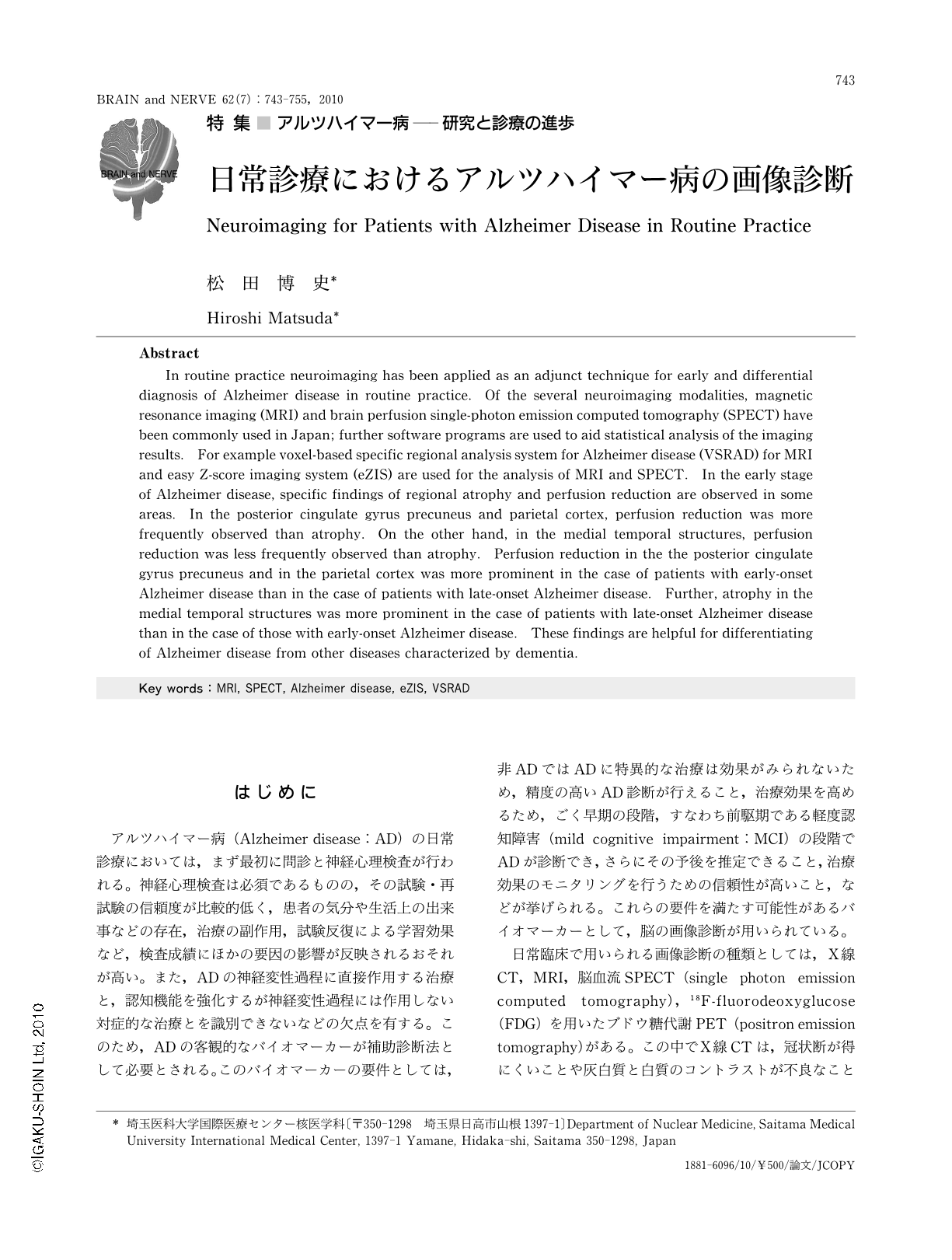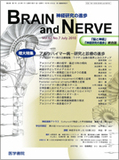Japanese
English
- 有料閲覧
- Abstract 文献概要
- 1ページ目 Look Inside
- 参考文献 Reference
- サイト内被引用 Cited by
はじめに
アルツハイマー病(Alzheimer disease:AD)の日常診療においては,まず最初に問診と神経心理検査が行われる。神経心理検査は必須であるものの,その試験・再試験の信頼度が比較的低く,患者の気分や生活上の出来事などの存在,治療の副作用,試験反復による学習効果など,検査成績にほかの要因の影響が反映されるおそれが高い。また,ADの神経変性過程に直接作用する治療と,認知機能を強化するが神経変性過程には作用しない対症的な治療とを識別できないなどの欠点を有する。このため,ADの客観的なバイオマーカーが補助診断法として必要とされる。このバイオマーカーの要件としては,非ADではADに特異的な治療は効果がみられないため,精度の高いAD診断が行えること,治療効果を高めるため,ごく早期の段階,すなわち前駆期である軽度認知障害(mild cognitive impairment:MCI)の段階でADが診断でき,さらにその予後を推定できること,治療効果のモニタリングを行うための信頼性が高いこと,などが挙げられる。これらの要件を満たす可能性があるバイオマーカーとして,脳の画像診断が用いられている。
日常臨床で用いられる画像診断の種類としては,X線CT,MRI,脳血流SPECT(single photon emission computed tomography),18F-fluorodeoxyglucose(FDG)を用いたブドウ糖代謝PET(positron emission tomography)がある。この中でX線CTは,冠状断が得にくいことや灰白質と白質のコントラストが不良なことから,MRIほどの有用性はない。ただし,迅速,かつ短時間に撮像が可能なため,主に認知症を呈する慢性硬膜下血腫や脳腫瘍などの治療可能な疾患の除外に用いられる。FDG-PETは,ブドウ糖代謝がシナプスで活発であり,シナプス機能を鋭敏に反映するとされることから,世界中でADの早期診断や鑑別診断に以前から広く用いられてきた。しかし,本邦ではFDG-PETは保険収載されておらず日常臨床には応用しがたい。これらのことから,本邦においては,保険収載されているMRIと脳血流SPECTがADの画像診断として広く用いられている。MRI装置は広く普及しており,放射線被曝もなく,安価かつ容易に施行可能であるが,その所見は非特異的なことが多く,所見の解釈が難しい。SPECT装置はMRIほど普及しておらず検査費用も高額であるが,ADでは比較的特異的な血流低下パターンがFDG-PETとほぼ同様に得られる(Fig.1)。これらの画像診断の評価には,視覚評価を補うものとして,コンピュータを用いた画像統計解析手法が広く用いられるようになり,診断精度の向上が図られている。本稿では,現時点で確認されているADにおけるMRIと脳血流SPECTの所見と,その画像解析手法を中心に述べる。
Abstract
In routine practice neuroimaging has been applied as an adjunct technique for early and differential diagnosis of Alzheimer disease in routine practice. Of the several neuroimaging modalities,magnetic resonance imaging (MRI) and brain perfusion single-photon emission computed tomography (SPECT) have been commonly used in Japan; further software programs are used to aid statistical analysis of the imaging results. For example voxel-based specific regional analysis system for Alzheimer disease (VSRAD) for MRI and easy Z-score imaging system (eZIS) are used for the analysis of MRI and SPECT. In the early stage of Alzheimer disease,specific findings of regional atrophy and perfusion reduction are observed in some areas. In the posterior cingulate gyrus precuneus and parietal cortex,perfusion reduction was more frequently observed than atrophy. On the other hand,in the medial temporal structures,perfusion reduction was less frequently observed than atrophy. Perfusion reduction in the the posterior cingulate gyrus precuneus and in the parietal cortex was more prominent in the case of patients with early-onset Alzheimer disease than in the case of patients with late-onset Alzheimer disease. Further,atrophy in the medial temporal structures was more prominent in the case of patients with late-onset Alzheimer disease than in the case of those with early-onset Alzheimer disease. These findings are helpful for differentiating of Alzheimer disease from other diseases characterized by dementia.

Copyright © 2010, Igaku-Shoin Ltd. All rights reserved.


